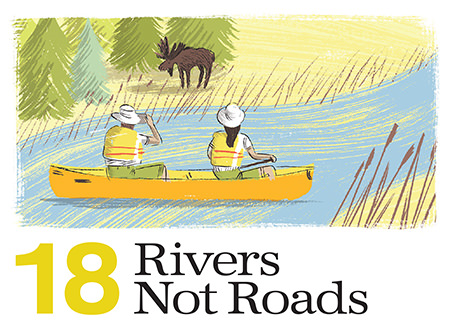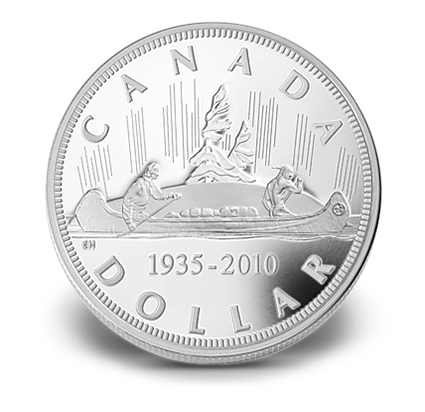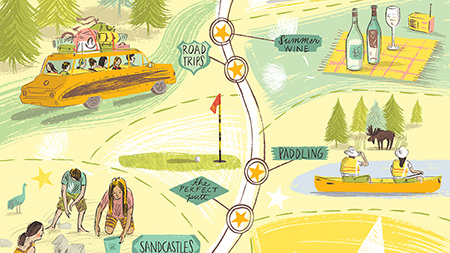By Wanda Vivequin on May 9, 2014; illustrations by Katy Dockrill

The canoe is as much a piece of iconic Canadiana as the beaver and the maple leaf, says Neil Hartling, '82 BPE, outfitter, author of three books about northern rivers and founder of Nahanni River Adventures, based in Whitehorse, Yukon. This summer is the perfect time to find your inner voyageur and get to your vacation destination under your own steam, says Hartling. Here, he offers tips for beginners and more experienced paddlers. "It is not as hard as it looks, but there are a few things you should know before you pick up a paddle."
Choose the Right Canoe for the Job
Make sure you know how you want to use the boat before making a big purchase - or better still, rent or borrow before you buy, says Hartling. There is a difference between a canoe and a kayak: a canoe is usually open and a kayak has a cockpit. The most popular canoes for recreation are:
General Recreation
These canoes are stable and durable. They are generally made of plastic or aluminum and don't have too many extras. They are usually deeper, wider and less likely to tip. You will probably find these boats at sport stores or as rentals at a lake. They are sturdy and reliable, but fill them up with gear and you might not have much energy to paddle all day because of weight and inefficient design.
Touring and Camping
These boats are generally lighter and have more space, allowing you to carry all of the cargo needed for longer and overnight trips.
Your choice of boat will also depend on whether you intend to tour on slow-moving rivers or on lakes. Lake travel is easier in shallow, sleeker boats while slow-flowing rivers are better paddled in slightly deeper and more stable boats.
Whitewater Canoeing
Designed for manoeuvrability and seaworthiness in turbulent water, they have higher sides to keep them dry inside. A rockered bottom helps the boat turn faster, and the paddler generally kneels. Once you've mastered the basics, these boats are a joy for exploring. Plus, paddling them looks so Canadian. All you need is a red-checkered shirt under your personal flotation device.
Beginner Tips
- Practise capsizing and righting your boat at a beach. These skills will serve you well when you flip.
- Remember: it's an aquatic sport, so wear a personal flotation device at all times.
- Canoe courses are fun and a great way to advance your skills.
Tips for Longer Trips
Ensure that all group members have the appropriate skills and confidence. (Always travel in groups of three or more.)
Find others who have done the trip before and get their advice on the best places to put in, camp and exit. Ask what hazards exist and where they are. Local canoe clubs are a great resource.
If you plan to canoe a river, check out the conditions beforehand at wateroffice.ec.gc.ca/index_e.html.
Bring along a good map and file a float plan before you leave, including time, location and descriptions of the vessel and people on board. You can find a handy float plan template at floatplancentral.org.
Packing for an Overnight Trip
Unlike a backpacking trip, you can afford to take a few more luxuries along on a canoe-camping trip because you don't have to carry it all on your back. Decide what to take and make sure everything is in good working order before you leave - zippers fixed and holes patched. Be sure everything is packed in waterproof bags or containers; commercial dry bags are best. Before setting out:
- Pack your gear into bags and name each one to make it easier to find things when you're making camp.
- Test load your canoe. The rules for loading are the same as backpacking: heavier gear in the middle on the bottom, and then lighter stuff around.
- Fasten everything securely so you won't lose anything if you flip.
- Keep maps and other paperwork handy in a waterproof bag.
- Always keep a spare paddle close at hand in the canoe. Make sure it is secured but not so secure that you can't unleash it in a hurry.
- Make sure you have water, a snack, sunscreen, bug spray, a knife and a flashlight close at hand.
- Padded, fingerless gloves are great to avoid blisters and keep your hands warm when paddling in the rain.
- Keep your rain gear handy in case the weather turns when you're on the water.
- Don't forget to wear a personal flotation device at all times.
- Have fun, be safe and "keep the open side up."

